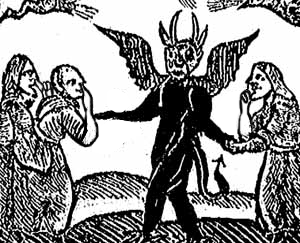The Fine Art of Nosepicking, Volume 3, Enhanced
I believe it was Mark-Jason Dominus who first noted how odd it is that a
society intent on being open about masturbation still considers nose-picking to
be a taboo subject. (He went on to discuss how the air of Taiwan seemed to
have a beneficial effect on the asthetic qualities of his boogers, but a
comparison between different climates and their manifold effects on mucous is
quite beyond the scope of this discussion.)
Of course, there are those who find nose-picking--and that activity so often
associated with nose-picking, booger-eating--to be totally offensive. As one
contemporary wag comments, ``To me, nose-picking is like homosexuality--whether
or not you do it is your own business, I just don't want you to do it
in front of me.'' Other sources have drawn the same parallels, only between
heterosexuality and nose-picking.
Nevertheless, people are picking their noses as much as ever. To understand
why this is it may be profitable at this point to explore briefly the history
of nose-picking, after which we will give a short overview of the current state
of nose-picking, followed by a quick forecast for the future of this idler's
art.

This Paleolithic cave painting from Ardèche, France, clearly
shows nose-picking (left), as well as communing with the People's
Representatives from the Dog Star (right) and not having sex (not shown).
 |
No one knows who it was who first used their digits to scrounge around inside
their nasal passages for tasty morsels, for, like the discovery of fire, the
advent of nose-picking occurred before there were written records. However, we
have some good evidence that nose-picking was already fairly widespread as of
about ten thousand years before the birth of Christ; for, in the south of
France, among other places, researchers have found exquisite cave paintings
clearly depicting primitive nose-pickers among figures performing several other
day-to-day activities, such as hunting, farming, fishing, communing with the
People's Representatives from the Dog Star, and not having sex.
The first surviving written record of nose-picking was discovered by Wilbur
Leakey in the late seventies while working in Egypt. Here we have a
marvelously well-preserved papyrus scroll used for daily accounts by the scribe
of the famous boy pharaoh Tutankhamun, noting the payment of three head of
cattle in addition to food and lodging given to the young king's personal
nose-picker. That the ruling class had by this time--approximately 1350
BC--evolved the need for a specialized nose-picker is testimony to its
widespread practice. That some historians have dismissed this evidence,
asserting that Tutankhamun was certainly an anomaly in having his own picker,
shows only their shallow reading of the contemporary texts; several other
papyri dated only a few decades after Tut's death clearly denote the importance
of nose-picking to the nobles of Egypt.
Nor was nose-picking confined to the relatively advanced society of the Nile
River valley. It is believed that the Celts were notorious nose-pickers; in
fact, there is some evidence that the henges scattered about the British
Isles--of which Stonehenge is the most famous and well-preserved--were used not
only as astronomical calendars, but also as the sites for enormous snot-hunting
ceremonies. Also, several manuscripts from ancient India, which a few
researchers think may very well be the missing 33 books of the Vedas, allude
to nose-picking and booger-eating, believing that such practices
lead to a better sense of smell and a smooth, warm complexion.
 |
This marvellously well-preserved painting from the wall of
King Tutankhamun's tomb shows Nut, the Sky-goddess of ancient Egypt, delicately
picking the nose of the young pharaoh. Clearly, ritual nose-picking was
expected to continue in the after-life.
Only a scant thousand years later, though, nose-picking fell into disrepute.
Aristotle, writing circa 350 BC, admonishes, ``Being, or that which is, can be
said to be in many ways, as has been previously stated, in accordance with
Nature, an entirely non-nose-picking enterprise.'' Archimedes was to top
Aristotle just a century later, stating, ``My screw will not be used for the
benefit of nose-pickers, for they are truly unpleasant fellows.''
Nose-picking, of course, went on regardless, though now it was confined to the
privacy of one's own home. The great Emperor Constantine issued a decree in
299 AD stating, among other things, that anyone caught with a finger in their
nose deeper than the first joint was to be summarily executed. A contemporary
account, which comes to us rendered into English from the Latin by the learned
medieval scholar St. Rectus, details an event that took place in Rome around
300 AD: ``Ther was dwellynge at Rebus a mayden who, after interrogaciouns,
confess'd that she was wont to pyck her nose. She was ston'd in accordans wyth
law, and her abode burnt.''
With the eventual decline and collapse of the Roman Empire, nose-picking again
became a favored sport of the populace. All through the Middle Ages,
nose-picking was considered, if not a noble activity, at the very least an
accepted one. From all accounts, it was not considered uncouth to pick one's
nose at table; and we find even the poorest baron could count among his
possessions a gilded nose-picking spoon. The wealthier houses actually
rediscovered the need, first expressed in ancient Egypt, for a nose-picking
assistant; this position was highly coveted by lesser landless nobles as well
as the peasantry. It was not uncommon for counts to give visiting dignitaries
the honor of their own personal mucous, and no prince was unmoved by the prospect
of being allowed to slip his pinky into the nostril of the king. A table has
been uncovered, too, which, on its underside, bears the distinctive marks of
trailing boogers having been scraped off.
 |
This medieval woodcut depicts the predominant Christian belief
of the time: that nose-picking was the prerogative of an undoubtedly shady
person.
King John of England was particularly known for his nose-picking habits, and
the wealth and plenty of his boogers was well thought of throughout the land.
But such approval did not extend as far as Rome: When word reached the pope of
John's activities, he immediately had the king excommunicated. Soon after,
however, John did penance and was restored to the Church, though he never did
wholly cease his nasal explorations.
In the following years, the papal distaste for matters olfactory grew, until
Pope Sixtus IV issued a bull banning nose-picking under pain of eternal
damnation. The bull got deeper, though, as the fifteenth century drew to a
close, with Sixtus' successors on the throne of St. Peter waging an all-out war
against the practice of nose-picking. At about this time, the last known copy
of Gropius' classic Latin treatise, On Nose-picking, was burned with
great ceremony at the Vatican, and to this day we only know about it through
second-hand sources.
 |
Juan Bautista de Naranja bolo Querecza sierre Padre del Jomama
y Tupapi Castrolonuevajorca. The similarity bewteen this portrait and
contemporaneous portraits of Shakespeare has led some modern scholars to
believe that Castrolonuevajorca was, in fact, like Cervantes, the Spanish
translator of the works attributed to him from Shakespeare's English.
The Renaissance dawned for all human endeavors, but somehow the ancient art of
picking choice bits from one's nose was left behind. While many other arts and
sciences found their fulfillment in the greatest of their proponents--da
Vinci, Michaelangelo, Raphael, Shakespeare, Cervantes, and so on--nose-picking
fell to men of much shorter stature for its advancement and
nurture. In particular, one Juan Bautista de Naranja bolo Querecza sierre
Padre del Jomama y Tupapi Castrolonuevajorca wrote several small tracts
regarding nose-picking, some of which have survived to the present day.
``Picking one's nose,'' he writes, in a manner oddly similar to recent
comments, ``is like making love to a fine woman; one must be subtle and
graceful, and never dig too deeply, except when occasion truly demands it.''
 |
During World War II, posters such as this one, showing a
German soldier preparing to flick a booger at the Allies and ridiculing the
``Huns'' for their alleged nose-picking practices, were commonly seen in the
United States. More often than not, these posters were sponsored by automobile
manufacturers, who competed for their steel with the many nosespoon companies
that had sprung up between the wars. Most of those companies were bankrupt by
1942, in part due to this propaganda.
The last few centuries have seen a slow but sure resurgence in the practice of
nose-picking. This does not mean, however, that it does not have a great deal
of social stigma still attached to it--as late as 1942, American anti-Hitler
propaganda declared the Germans to be ``rapers of women, eaters of children,
defilers of the dead, and pickers of their noses'' and picking one's nose in
public is still a capital offense in some Middle Eastern countries. However,
the trend has certainly been towards a much more open attitude about
nose-pickers and nose-picking in general. For example, during the United
States presidential elections in 1992, Democratic nominee Bill Clinton admitted
to having picked his nose in college--though he denied having eaten his
boogers--and was later elected president. In addition, several powerful
world leaders were photographed shamelessly digging deep into their nostrils
during public ceremonies; these photos, though well-publicized, were not
received with the acrimony the publishers had expected, and in fact most of
those leaders are still alive today.
So where is nose-picking headed? With such a varied history, it is difficult
to say. We can hope that, as the people of the world grow more tolerant of
others who fail to bathe, worship crocodiles and politicians, insert their
sexual organs into other people's egresses, continue to wear seersucker out of
season, and play with their privates in public and their publics in private,
they also grow more tolerant of nose-pickers. We can hope this even as we pull
a long jelly-like strand from our left nostril, or a thick crunchy paste from
our right, and eat it, slowly reveling in its texture.




